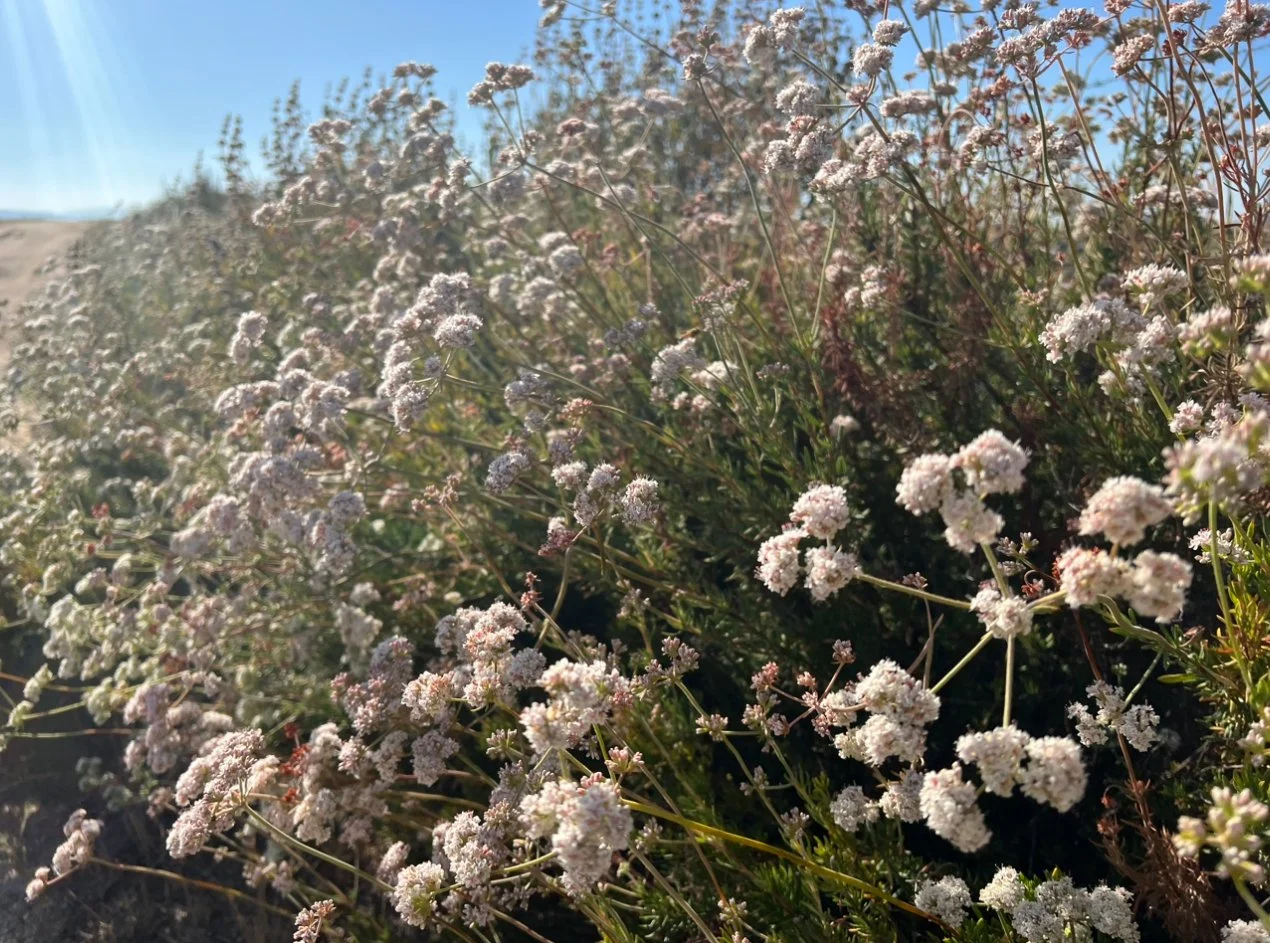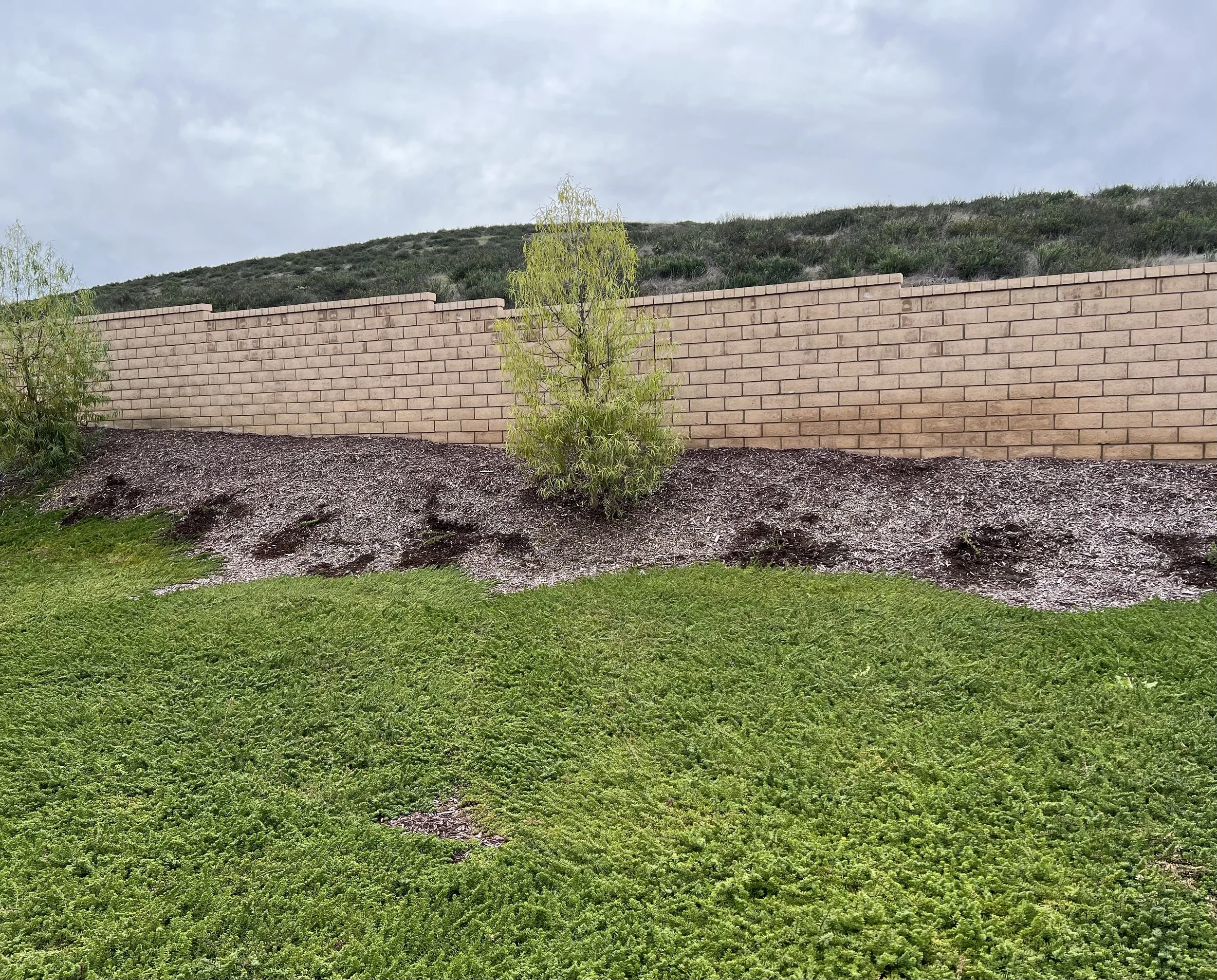I’ve been waiting to plant the CA buckwheat and white sage that I purchased this week, and today we got dirty and planted it all. This whole journey to rewilding my yard has been educational for me, and I’m loving learning about all the plants and how to create the best environment for them to thrive.
Pictured above: pic 1- wild white sage, pic 2- wild CA buckwheat, pic 3 white sage, pic 4 CA buckwheat
My biggest discovery for me is learning about all of the plants that grow around me, and what plants provide the most for wildlife. This has taken me years to learn about the diverse flowers, plants, shrubs, and trees that exist in my neck of the woods. On my hikes, I spend time taking pictures of these all of the beauties and note what grows well and what the animals and insects interact with and utilize them. Thank goodness for the identifier application on the iPhone because this has allowed me to learn, and now identify, different plants. This has been a game-changer for me. When I went on a hike the other day, I was able to spot and correctly identify all of the plants that I saw and it made me so happy to have learned what I love so dearly and appreciate so much.
Another discovery that I am proud of is finding a nursery that specializes in CA native plants for the Southern California zones. I love supporting a new, local business that just started out. The owner is an avid botanist and helps organizations with invasive species. Thanks to Walker’s Wildlands nursery for all of your help and the advice you gave! The owner taught me a lot about the plants he has and I’ll be making many more purchases from them. Who knew that So. Cal has a native orchid? I didn’t!
Getting the CA buckwheat and white sage planted to start the process of rewilding my yard, is definitely a proud moment because it tied everything together- what I learned, what I love, and providing and extending it to the the amazing wildlife in my area. This is a way to make a significant difference. This is a way to be one with nature. This is a way to help and assist your ecosystem. My kids and I planted together, which made it even more special because I was able to teach them how to plant, about these plants, and spending quality time as a family outdoors.
And then, when you least expect it, nature shared a special moment with us. It’s been a year since we had seen our roadrunner, but as we were planting, the spicy bird jumped into our yard and made a crazy clicking sound that I’ve never heard before. I thought my son had played something on his phone as a prank, but he pointed out the roadrunner to us and the inquisitive bird was investigating our new plants and hopped back into the field behind our house. It was a sign.
I hope that as these plants grow and I add more native, local plants to my yard, that the roadrunner will make a home here and other birds and wildlife will find safety, shelter, and food in my yard. I’m doing it for them and it seems like we have had a stamp of approval from the local official.
I’m waiting on some seeds to arrive and I am going to hopefully get them sprouting. CA lilac and Indian milkweed are the reason I ordered seeds because these are almost impossible to find in my area. The CA lilac in nurseries are often hybrid from native lilacs but not the actual native species. This is going to be a bit of an endeavor for me because I have never attempted growing seeds so I’m really hoping it all works out, but I do have a call in for the lilacs at another nursery but this species of lilac is native. To make sure I’m offering a wider variety of plants, I included lots of native wildflowers in this order which will brighten up my yard and provide pollinators, insects, and birds more selection for them.
Pic 1- White sage planet, Pic 2- CA buckwheat planted. I’m giving them some space because I plan on planting other plants behind them (like the CA lilac) and the buckwheat can grow quite large.
Tips on how to rewild your yard:
Never use any chemicals at all (no herbicide, insecticide, pesticide, or rodenticide).
Search your growing zone and then research what native plants grow best in your climate zone. You can also call your local nature preserve or search their websites for plants that grow best around you.
If you can’t find it at a nursery, you can order seeds and start from there.
Find native plants that provide the most food for the animals and insects in the form of seeds, nectar, or shelter.
Try to plant a variety of native plants.
Start small and work from there. Every bit counts!
Articles on rewilding:
Rewilding Magazine: 6 Tips for Rewilding Your Home, Garden and Yard
Direct Native Plants: Rewild Your Garden- 10 methods
Ideal Home: How to make seed pots out of newspaper







